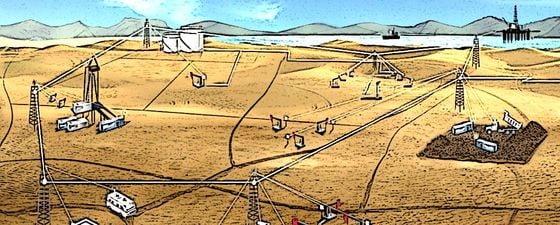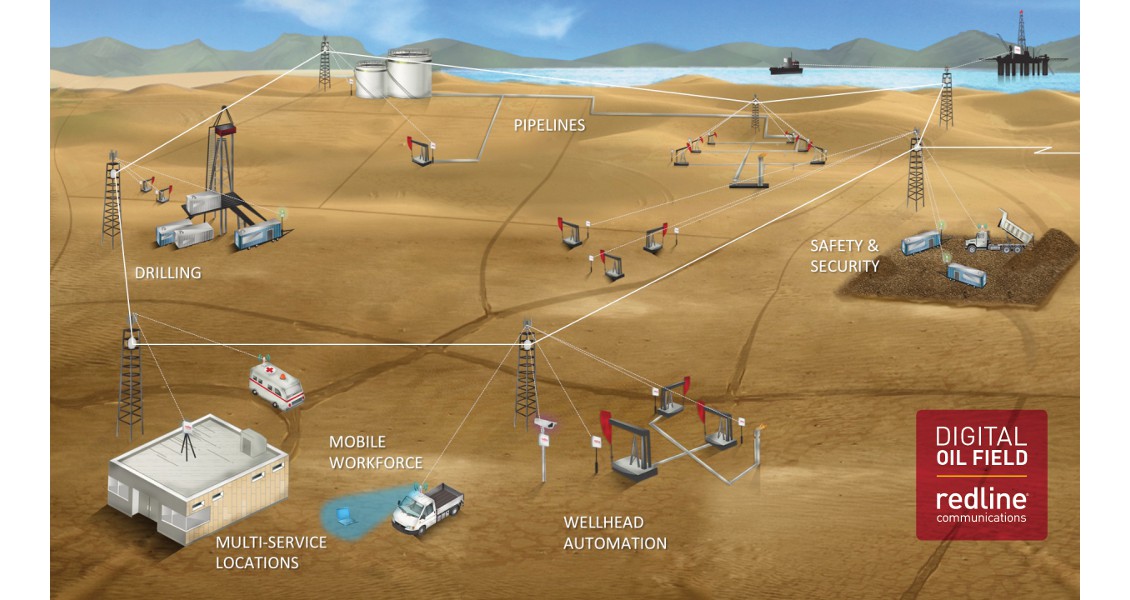‘Digital Oil Field’; ‘Integrated Operations’; ‘Smart Fields’; ‘Intelligent Oil Field’: all phrases that sum up a new approach to exploration which is becoming more and more necessary as costs are forced downwards and the labour force shrinks, whilst efficiency and production need to rise. An idea that a few years ago simply meant using a machine for a particular exploration undertaking has now widened to encompass automating and integrating a huge range of tasks across many aspects of the exploration and production cycle, all made possible by immense changes in our ability to rapidly process vast quantities of data in very short periods of time.
A Process, not a Place
Many people think of the digital oil field as a fancy technological hub, with hundreds of flashing screens and a couple of experts earnestly comparing notes in a hushed environment. But it is better described not as a physical presence, but as a concept, encompassing not just data being streamed from far distant wells, but the processing, integration and analysis of that data in a number of physical environments. These could include not just a purpose-built technology room, but also an oil company’s headquarters, a consultant’s office and the wellsite itself. Digital communications such as video-conferencing between these diverse centers are an intrinsic part of the process. And the idea is not confined just to operational processes, as data fed through the intelligent oil field will inform decision-making prior to drilling an adjacent well, and will be fed into post-drill analysis.
Automation is a vital part of this process. By taking the human out of mundane tasks, productivity is increased, and the expert is freed to use his or her knowledge on more difficult, analytical work. Integrating a large number of the processes involved in drilling, such as remotely steerable down-hole and integrate-while-drilling tools, produces large quantities of real-time data across a range of disciplines. One of the features of the digital oil field is the requirement for collaboration across a wide range of expertise, meaning that decisions are arrived at with a full awareness of all the issues involved, hugely increasing efficiency.
Technological innovation has been a prime driver behind the move in the development of the digital oil field, but it can only work properly when automated operations are streamlined with new personnel work processes, and a vital component of their success is ensuring that people understand the concept and process, and are well trained and fully committed.
Many Benefits
And the point of all this? Timely information leads to better decisions and productivity gains, while an increase in the number of remotely operated fields decreases the risk of accidents, with fewer people traveling to, and working in, potentially dangerous environments.
Cost savings are tangible. Shell believes that the value of its ‘Smart Fields’ implementation over a five-year period was US$ 5 billion, while IHS Cera have calculated that by using digital oil field processes, companies could realize up to 25% savings in operating costs, up to 8% higher production rates, 2–4% lower project costs, and as much as 6% improved resource recovery, all within the first full year of deployment.
Lower costs, more efficient reservoir management and fewer mistakes during well drilling will in turn raise profits and make more oil fields economically viable. Quite some prize!






